Dangerously Unstable: Alex Adriaansens
Alex Adriaansens (NL) is one of the founders of V2_ (1981) and the general and artistic director. He is also the director of the bi-annual Dutch Electronic Arts Festival – DEAF. He is a guest curator for different art and technology festivals and events (a.o. Meta.Morf, Norway; Moca in Taiwan; China Media Art Tri- annual; eArts festival in China; Dutch Cultural Center Shanghai for the World Expo 2010). He has given many talks and presentations around the world (universities, symposia, festivals, workshops, expert meetings etc.).
The following is a compressed transcript from the conversation between Alex Adriaansens and Zane Cerpina on December 8, 2017, Rotterdam.
Zane Cerpina (ZC): What is dangerous art to you? What and how should dangerous art be?
Alex Adriaansens (AA): Dangerous art is art that disturbs, that transforms the environment in which it is practiced. That means it should have an impact on the outside world, the world outside the arts. If art is dangerous, it's dangerous for something or to someone, and sure art can also be dangerous for itself. I always had a love-hate relation with the arts, since most of what we call art is a very introvert and conservative domain, while another part of the art practice is taking an avant garde position and likes to formulate critique on itself and society. The founders of V2_ were practicing artists. We did art schools; we looked at the arts as being a free space, not yet bound to the power and language of economics, but we represented only a small part of what we call ‘the arts’. So, in that sense, the V2_ art practice is dangerous for the arts itself, since we were questioning our own practice and art in general. By questioning the arts and our own practice, we were redefining what art could be and mean for ourselves and society at large. Here, we were expanding the domain of the arts by relating it to social, economic events, and to technology as a major designing factor of everything in the world. Here, the art started to question society and the role of the arts in it. Here, we also became dangerous for the world outside of the arts.
If art is dangerous,
it's dangerous for something
or to someone
At V2_ the arts question and thus disturb the concepts on which your life and worldview are built. It becomes dangerous because it questions you and your environment and all the belief systems on which your/our world are based. It’s a bit of a romantic view on the arts, but since economical concepts have saturated all activities in society and all our thinking, the arts is the only domain left where risks are taken, where critique can be performed in an interdisciplinary way.
ZC: Talking about dangers of the past, what works would you like to bring out from the V2_ archive?
AA: There have been many projects that had a dangerous aspect. First, what we tried to do is question the arts in the context of our media- and technology saturated societies. Who produces art; where can you experience this art; how does art relate or connect itself to social, political or economic issues, concepts, or topics? This has a long history in the activities of V2_ (since 1981) and shows the potential and power of art to engage society.
At the same time, we have positioned ourselves within the arts because art is a domain where you have several specific privileges and a sense of the liberty that you can allow yourself to do certain kinds of research and build a critique based on ‘doing and making’, as well as ‘theory and writing’.
At V2_, we want to be dangerous within the arts itself. The most dangerous projects we present have a strong social, political, or conceptual context, like thinking about the body in relation to technology. The Body was seen as a holy temple within Christianity, something you should not invade and transform with technology. The body was seen as a temporary vehicle to get to the next stage etc. Questions on Life and Death were closely connected to this. Think about the incredible impact of technology on all aspects of our lives and all fantasies and dangers related to this: technology as the Golem that will ultimately destroy humans. To illustrate this, in 1993, we set up a 4-week event called The Body in Ruin. We showed an exhibition with works from Paul Sermon (Telematic Dreaming), Keith Piper (A Nigger in Cyberspace), Orlan (My Flesh, the text and the languages), and Erik Hobijn (Delusions of Self-Immolation), an exhibition that would never have been possible if we had asked the city for permission, since they would have thought of it as being too radical and provocative. We took care of security and safety as much as we could, but we took a certain risk. So, there was a certain danger to it, but we could oversee the risks well. The most dangerous machine -physically speaking- in the exhibition was the often-named suicide machine, called Delusions of Self-Immolation by Erik Hobijn. (1) It was so risky for the participants that they had to sign a contract before stepping into it. The danger was not so much being inside the suicide machine itself, since this was a controlled machine with precise safety measurements. The danger was the mental process you would undergo when people prepared you to step onto the suicide machine: a gigantic device with two long arms, each 6 meters long, where you would stand between the two long arms. One arm was a flamethrower spitting a ten-meter-long flame, while the other arm was a kind of shower that would put out the flames by taking all oxygen out of the air a split second after. The person that was selected to go on the suicide machine had to be prepared before stepping onto the machine. It took about 30 to 40 minutes before the person was prepared by the artists, who would put a (fire protective) paste on your body very slowly. When done, you would be guided to the machine and strapped onto it. A limited audience was allowed to watch this process or, better said, this ritual. You could hear a needle fall on the floor; everybody was extremely concentrated and already imagining what would happen with this person once the machine spit out its giant flames. You were thinking about what might happen when you would step onto this machine?! Nobody got seriously injured on this machine; only small blizzards occurred once a while, but people who had been on this machine got a different mind-set as it was a near-death experience which was the goal of the project.
The Body in Ruin exhibition at V2_, 1993
Technology as the Golem
that will ultimately destroy humans
If you think of a dangerous (art) machine, then this was a dangerous work, mentally and physically.
It was a near-death experience
ZC: It is interesting to search through the V2_ archives through you. Any other works to mention?
AA: If the physical aspect of danger seduces you, then it is hard to get out of that perspective. Many of the works we have developed or showed at V2_ have been questioning the invasiveness of technology, social issues, control issues, and hacking. These are all dangerous topics, in principle, or relating to dangerous future scenarios related to technology. They can be dangerous in a social sense, political sense, or within any other context. Most works at V2_ probably fit within this category, even though we also presented quite a few dangerous works due to their physical impact.
Delusions of Self-Immolation by Erik Hobijn, 1993.
The physical aspect
of danger seduces you
In the sense of raising public attention, danger is very much a promotional issue. You can use it to make people excited, to make them curious, to seduce them to do something. Danger is an exploitative concept for raising attention. And sure, most people feel attracted by danger; it spices up their daily routines. It makes them more alert, more present.
ZC: At V2_, the exploration of more analogue and physical dangers seems to be replaced with algorithm-based, digital, virtual, and artificial intelligence related topics. Are all dangers now hidden in the black boxes of technology?
AA: The dangers are hidden in the black box, but the impact is outside it. We cannot really oversee what is happening in our black box society, and we can be surprised and/or speculate by what comes out of the black box.
We cannot really oversee
what is happening in
our black box society
Evening of the Black Box Concerns, V2_, 2017.
I have this feeling something is going to change very drastically in the coming 10 years. And I don't know what it is, but one thing that triggers me is the word 'singularity'. It expresses so nicely our limited understanding of how technology might be able to determine its own future. This concept has a place in the minds of many people, of many writers, artists, developers, and philosophers. It relates to the insecurity that people experience every day, such as economic, social, and political insecurity. It is an interesting topic that relates to how we imagine our technological based future, a topic well-known in the arts.
You can easily connect The Body in Ruins to the same kind of question: Could there be intelligent machines? Could there be consciousness in those machines? In that case, we would have to understand what consciousness is; otherwise, we could not design it, or can it emerge by itself out of specific conditions that we do not know yet? Who are we? Where are we going? Where are we coming from? And how do we understand ourselves? These questions come up repeatedly, although they are differently packaged each time, and the answers to these questions can be very dangerous!
ZC: What about accidents? The DEAF98 was titled Art of an Accident and the upcoming Meta.Morf Biennale in Trondheim focuses on the theme A Beautiful Accident. Are beautiful accidents dangerous too?
AA: It’s a nice wordplay the way it is framed within Meta.Morf’s theme 2018. A beautiful Accident has something paradoxical, of course.
In principle, most people feel a negative connotation to the word accident. It is not a word that is related to positive news or positive events. We are used to avoiding the word accident in that context, which is, of course, a wise decision. Nevertheless, in our world, accidents are an everyday part of reality.
People feel a negative connotation
to the word accident
The things we produce tend to malfunction as much as they are capable of functioning properly. We try to predict and control things; yet, we are often surprised by their creativity to malfunction in many ways. Accidents only happen from the perspective of an illusion of safety and control. Misfortune and failure are not signs of improper production; they are inherent to any production.
One can state there is a productive potential in rupture, friction, instability, and unpredictability. If we can frame and understand this productive potential, we could embrace malfunction and the accident as being inherent to understanding.
In Meta.Morf, we take the idea of the accident into the process of evolution that has brought forward a complex species like humankind. In 1994, there was a series of interviews and debates on Dutch television titled ‘A Beautiful Accident’ in which the central question was if the rise of humankind and, with it, Intelligence and Consciousness could be understood as the outcome of an endless series of accidents or if there might be some other concepts to explain it.
Any technology we develop
always comes up
with its own accident
Alex Adriaansens during Meta.Morf 2016 It’s Nice to be in Orbit exhibition opening
In the exhibition of Meta.Morf, we are questioning how we can understand intelligence by looking at how artists make use of artificial intelligence in their work. AI, in these works, is a simulation of a possible intelligent system, or a learning system that tries to develop some kind of intelligence.
Another question addressed is the concept expressed earlier that says any technology we develop always comes up with its own accident. In the case of AI, it might be the question what kind of accident it could be that will surprise us soon. Or can we be so creative to integrate possible accidents in the design process of AI?
Having this interest in the creative potential of technology to generate accidents is also expressed in the name of V2_, Institute for Unstable Media. The title came up when writing The Manifest for Unstable Media in 1987. We should look at instability as an inherent quality of all living systems and look at it, not only as something negative that should be eliminated, but also as a productive force that can make a system more resilient.
References:
(1) http://v2.nl/archive/works/delusions-of-self-immolation










